Quality control is one of the most critical aspects of food production: inspecting, testing, and grading of fruit and vegetables ensures that our food is safe, fresh, and meets food safety standards. In today's globally interconnected food economy, quality control tests are performed at several stages throughout the supply chain, from cultivation and harvesting to processing, packaging, transportation, and distribution.
Pre-harvest tests help growers assess the needs of their crops, make decisions about nutrition or pesticide applications, determine ideal harvest windows, and support farm management decisions of all kinds.
Starch is a type of carbohydrate found in various plants, including apples. During the ripening process of apples, the starch gradually converts into sugar. The level of starch in an apple is used as a metric to determine its ripeness, with higher starch levels indicating a less ripe fruit. A critical preharvest test in the apple industry, the starch iodine test is the most common method of calculating ideal harvest windows for apples going into storage.
Quality control metrics that can determine a fruit's suitability for harvest and long-term storage are called harvest indices.
Brix, or Degrees Brix, is a measure of the total soluble solids present in the fruit. Total Soluble Solids (TSS) are primarily made up of sugar (usually at least 80%) but may also include soluble acids like citric acid, vitamins like A and C, or other compounds. Generally though, when we talk about Brix values, it's about sugar. Brix testing is done at various points in the fruit's lifecycle, in preharvest testing it is often used as part of a maturity index. In the post-harvest world, Brix testing is used primarily to objectively assess flavor and sweetness of produce.
Color changes as fruit matures and ripens, and judging the ripeness of fruit by the external color is one of the oldest methods in the book. Different crops have different ripening processes, and the external color of the fruit isn't always the most important metric. Internal color assessment can be used to track maturity and ripeness in types of fresh produce that don't change color externally.
Color is also one of the most important factors for consumer acceptance of produce, so consistent color metrics are a critical part of a quality control assessment. Fruit color can impact both the grade and price of harvested fruit, and in some cases, postharvest color development needs to be induced.
A citrus fruit ripens and acquires that signature lemon yellow, this is the process known as "degreening", where lemons lose their green chlorophyll during the cold nights. In some climates, the degreening process may not start until well after the fruit is already mature, and needs to be induced through post-harvest treatments
Dry matter measurement represents the total solids in a piece of fruit, including starches, proteins, sugars, fiber, and carbohydrates, a dry matter measurement is most simply explained as the total weight of the fruit, minus the water content. Dry matter accumulation changes throughout the fruit growth cycle and is used as a maturity indicator in some climacteric fruits.
Titratable acidity measures the total acid content in food and is one of the most important maturity and flavor metrics in the citrus industry. In less mature fruit, there is a higher acid-to-sugar ratio, but as the fruit ripens and more starch is converted into sugar, mature fruits develop a higher sugar-to-acid ratio creating the sweet taste consumers prefer.
Ethylene (C2H4) is a naturally occurring plant hormone, often called the fruit-ripening hormone. To test ethylene gas concentration, fruit are sealed in an airtight container, allowing the ethylene to build up. After some time has passed, the gas inside the container is extracted and measured with a gas chromatograph. Gas chromatography is used in analytical chemistry to separates and analyzes gas compounds. In apples, a gas sample can be taken by inserting a needle directly into the core of the apple.
Climacteric fruit like apples continue to ripen after they are picked. These fruit will continue to ripen in storage or during transportation after harvest. Climacteric fruit produce more ethylene than non-climacteric fruit like strawberries, which won't become fully ripe after separation from the plant.
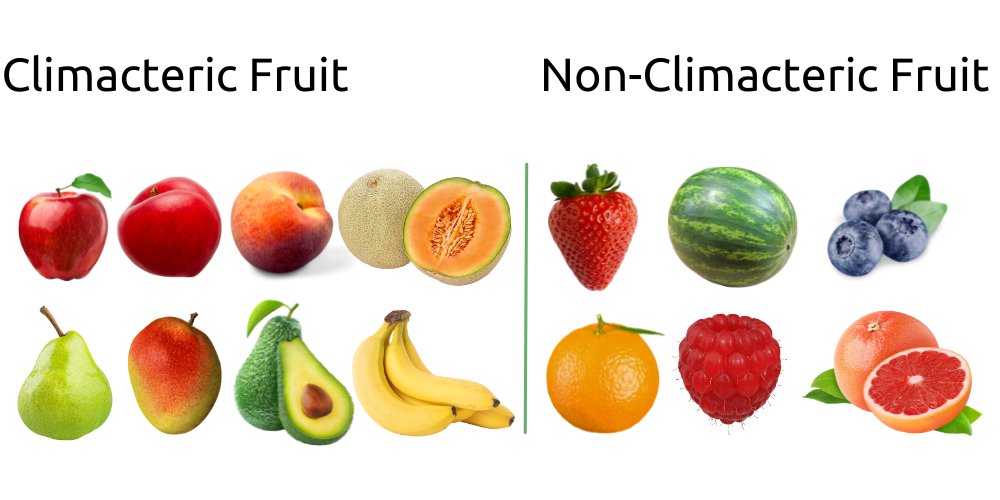
Firmness testing assesses the internal pulp firmness of a given fruit, which corresponds to the crisp, crunchy experience of eating fresh fruit. The main method of testing firmness is using a penetrometer, which is a device that measures the pressure and compression needed to puncture the flesh of the fruit.
Defects or damage to produce affects the grade and value, but can also have serious impacts on the shelf life and storage of harvested products. Defects can be grouped into a few categories.
Growing defects occur as a result of environmental factors that affect the shape, size, appearance, or texture of the fruit. Some of the most common growth defects are:
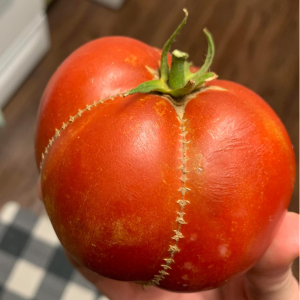
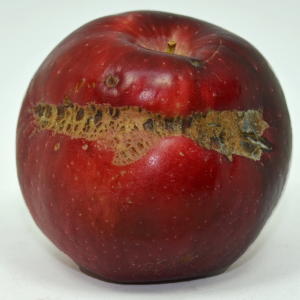
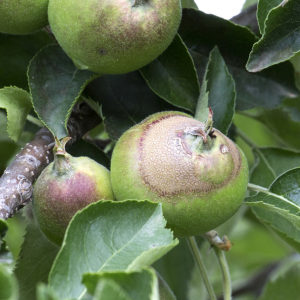
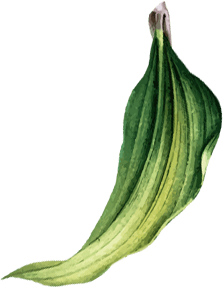
Picking defects occur during harvest and are typically caused by rough handling. While many harvest defects may appear small or innocuous, any wound or damage to fruit may leave it open to a secondary infection or infestation.
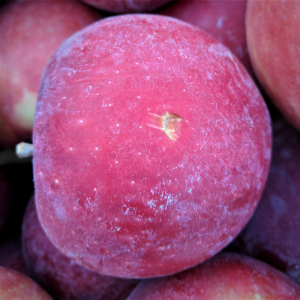
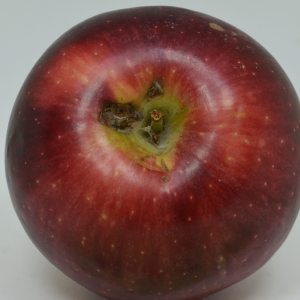
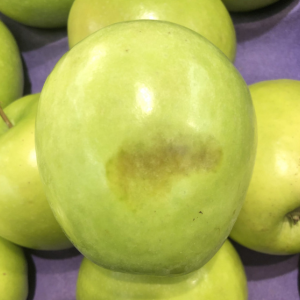
Even after the harvest, transportation and sorting are done, stored fruit and vegetables aren't immune to storage damage. Climate-controlled storage presents its own set of issues and risks. Storage disorders affect produce in long term storage and may produce undesirable flavors, affect texture, or even cause visible damage. These disorders include various kinds of storage rot and fungal development, as well as other physiological disorders.
Produce is inspected for various quality parameters, including appearance, size, shape, color, firmness, and absence of defects or flaws. Grading involves categorizing the produce into different classes or categories based on these quality attributes. Quality control measures adhere to specific standards set by regulatory bodies, industry associations, or market requirements. These standards define the acceptable levels of quality for various produce types and help ensure consistency and consumer satisfaction.
Sensory evaluation by a human tester is the simplest and most common starting place when it comes to quality control for fresh produce. These quality checks rely on the senses of sight, smell, touch, and sometimes taste to evaluate the quality and freshness of produce. Sensory evaluation can provide valuable information about the qualitative characteristics of fruits and vegetables, helping to determine their ripeness, texture, and overall desireability for sale. During sensory evaluation, quality control inspectors examine the produce visually, looking for any external defects such as discoloration, bruises, cuts, or blemishes. They assess the overall appearance, including color, size, shape, and uniformity, as these attributes are often associated with quality and consumer preference.
While sensory evaluation is a valuable tool, it's important to acknowledge that it has inherent subjectivity. The perception of sensory attributes can vary among individuals, and personal preferences may influence evaluations. To mitigate this subjectivity, sensory panelists undergo training to develop a common vocabulary and understanding of quality attributes. Standardized evaluation protocols and reference samples are often employed to minimize variability.